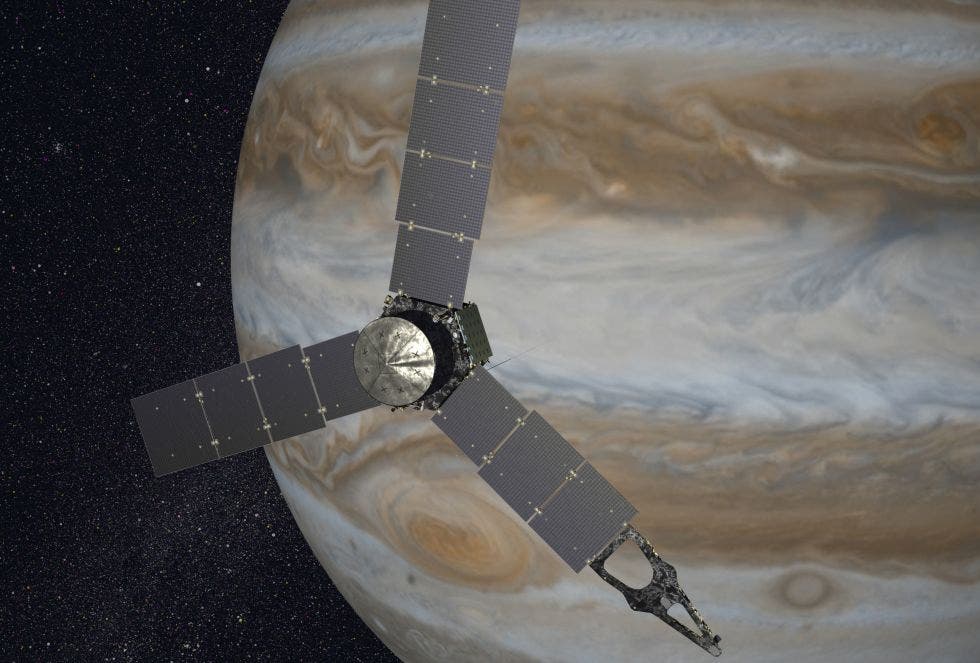It was a very tense night at NASA’s headquarters, as scientists and engineers were holding their breath to see what happens. Shouts of joy filled the air as Juno’s success became evident and the shuttle enrolled on the gas giant’s orbit.

The Juno spacecraft edged its way around Jupiter, embarking on a quest to help us better understand the gas giant. Artistic depiction, via NASA.
“All stations on Juno co-ord, we have the tone for burn cut-off on Delta B,” Juno Mission Control had announced. “Roger Juno, welcome to Jupiter.”
Those are the words NASA has been hoping to hear since 2011 when Juno was launched. Traveling at a speed of 165,000mph toward a swirling gas giant Monday night, Juno would get no second chances. Thankfully, it didn’t need any. It got it right the first time, adopting a polar trajectory above the gas giant.
The shuttle’s purpose is to offer an unprecedented view of Jupiter, offering real color pictures as well as physical information about the planet’s magnetic and gravitational field.
Scientists also plan to use Juno to study Jupiter’s depths. They believe that there are chemical signatures on the planet which could give us important clues about the planet’s birth and evolution through the history of the solar system.
“Nasa did it again,” said an elated Scott Bolton, Juno’s principal investigator. “That says it all to me. And I’m so happy to be part of the team that did that. I mean this team has worked so hard and we have such great people. And it’s almost like a dream coming true right here.”
It’s not the first time we send a shuttle to Jupiter, the Galileo probe surveying the gas giant two decades ago. However, Juno will take a much more in-depth look at the planet. With its two magnetometers it will map Jupiter’s magnetic field, also taking samples from Jupiter’s clouds, in an attempt to understand how hydrogen behaves at the huge pressures inside Jupiter.
No other shuttle in history got as close to Jupiter as Juno making this a unique and thrilling opportunity, but it’s one which must be exploited as soon as possible. Due to Jupiter’s huge gravitational and magnetic fields, the electronics aboard are expected to deteriorate quickly and start malfunctioning within one or two years, falling victim to radiation. The mission will, therefore, start immediately, when Juno embarks upon its first elongated orbit, spanning 53 days.
To make things even more tantalizing, Jupiter won’t be sending any data towards Earth as it passes through Jupiter’s radiation field, which means we’ll have to wait until late August before we receive any data.










